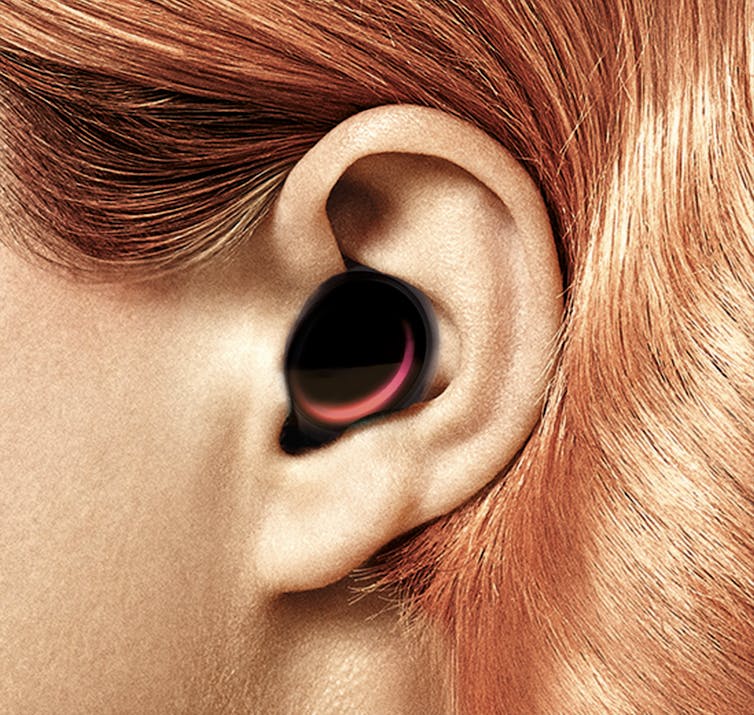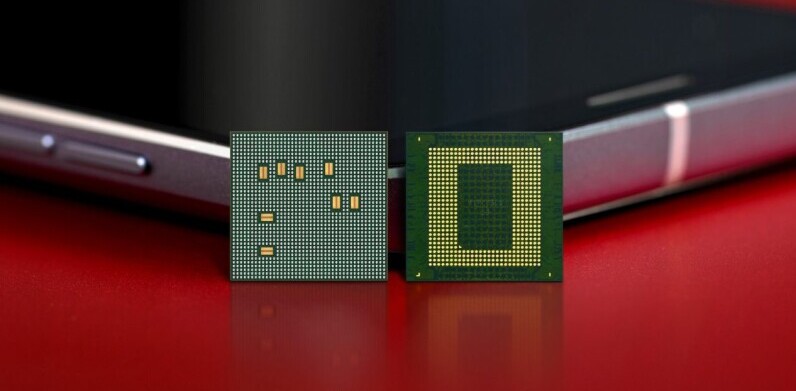Hearables are wireless smart micro-computers with artificial intelligence that incorporate both speakers and microphones. They fit in the ears and can connect to the internet and to other devices, and are designed to be worn daily. Some technology companies are now marketing these as “the future of hearing enhancement,” and focusing on their capacities to disrupt existing hearing aid markets.
But hearables aren’t hearing aids, ear plugs, headphones or headsets, although they could acquire the benefits of these devices. This means that one could rely on hearables as a kind of always-worn personal assistant nested in the ear, whether used for whispering scheduling reminders, playing music, amplifying sound or talking with friends.
But with AI, the hearable can also be used to determine the physiological condition of the user, along with their present knowledge or skill level in any content they’re accessing: for instance, when learning a new language.
As an expert in educational technology, I believe hearables have potential for education. Educational technology entrepreneurs are now discussing how this new reliance on aural technologies can result in greater incorporation of voice into learning, a shift from relying primarily on texts for transferring knowledge.
What hearables aren’t
To accompany traditional forms of classroom education or online education, hearables can support the delivery of lectures, educational podcasts, notifications and reminders through a wide variety of applications while supporting interactivity.
With hearables, instant replay and recording of words are also possible, so students could check their understanding of a lesson. Intelligent hearables could even determine the context and choose the right time and place to deliver the best content.
Another important feature for education is the ability to translate between languages.
In music education and language teaching, hearables are poised to play a significant role as listening is at the centre of both music and language comprehension. Music and language students could access relevant content from anywhere and practise their lessons. In addition, the biometric capabilities of the devices allow for measuring health and fitness variables, and so can be useful in health education.
Learners could use hearables almost anywhere with internet connectivity to communicate with teachers and other students. For example, while commuting, students could collaborate on projects and access content with text-to-speech technologies and talk directly with their teacher for advice.
Beyond using hearables in formal and informal educational and learning settings, these devices can also be well-integrated into the normal life and activities and used for more than learning — for instance, using voice commands to control home devices.

Professional training, independent learning
Hearables could be used by workers in manufacturing facilities or other professional settings. They could empower users to search for and access instructions while they are hands-on with their tools, without the distraction of a screen.
Outside formal education or the workplace, hearables can also help learners take control of their own learning. A rise in popularity of educational lectures as podcasts may have helped open the door to relying on audio in new ways and using different kinds of audio devices.
Language learning for native speakers could also be improved with hearables, as these devices could be used for improving skills of public speaking, presenting, interviewing or working in teams. With AI, hearables are also well-placed to support adaptive personal learning tailored to individual learner’s personal characteristics and situation. Hearables could become one of the principal ways learners of any age interact in learning.
Challenges, limitations
There are, however, significant challenges in using hearable devices. The most important to date are technical limitations. The need to reduce power usage and battery size, increase battery life and for more reliable connectivity, remain significant obstacles to be addressed by manufacturers.
Battery longevity and high bandwidth connections are essential to support natural language communications, particularly in language translation. In the immediate future, this may only be available in larger cities where 5G capability is now being set up. This fifth generation of wireless technology allows for a major reduction in energy consumption, which is needed to support extended battery life and high-speed internet. Fortunately, it is now incorporated in the latest operating systems and could soon become ubiquitous.
There are also major concerns related to social acceptability, in addition to privacy, when it comes to people talking out loud in a public space or office.
The comfort of these new lightweight devices could help to destigmatize their use, related to perceptions of hearing aids. Some hearable companies are focusing on stylishness while others promote them as “wearable tech for your ears.”
Perhaps hearables could be the earrings of the future?
Rise of ubiquitous devices?
Smart mobile devices are now ubiquitous among students. This cannot be said for hearable devices yet, and it could take some time before they achieve a similar level of ubiquity, if ever.
On the other hand, lessons designed for hearable device use can be easily accessed by students on their mobile devices or other computers.
Hearables will soon be here to stay both in wider society and the educational community. As trend forecaster and marketer Piers Fawkes has commented: “Maybe instead of people staring at their screens, they are going to be staring off into the distance. What’s it called? The thousand-yard stare.”![]()
This article by Rory McGreal, Professor and UNESCO/ICDE Chair in Open Educational Resources, Athabasca University, is republished from The Conversation under a Creative Commons license. Read the original article.
Get the TNW newsletter
Get the most important tech news in your inbox each week.






